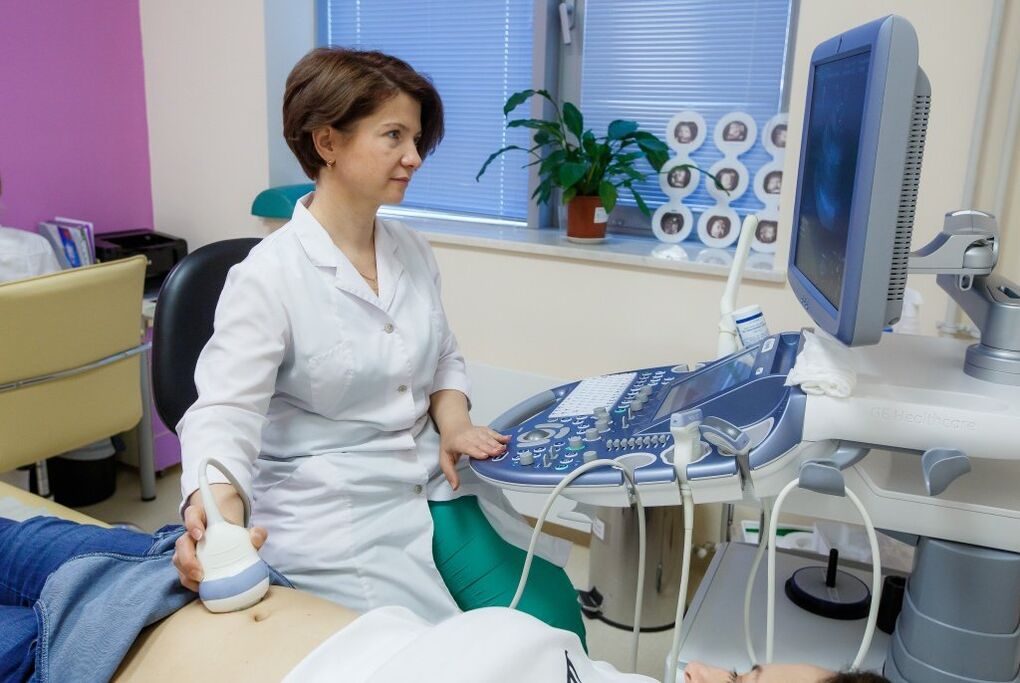Prostatitis in women is not a joke, but a common name for inflammation of the vestibule glands. This gland is also called the Skene’s gland, and its inflammation - skinitis - manifests itself with the same symptoms as prostatitis in men. What are the characteristics and dangers of this disease?
Does prostatitis occur in women?

The peculiarity of the pathology is that it is poorly detected by doctors and is rare.
Prostatitis in women does occur, but the disease is called skinitis. The inflamed glands in this pathology are located slightly below the urethra and are composed of sensitive tissue.
The Skene gland is thought to be the basic prostate that forms in the embryo before the genitals appear. In short, the Skene gland is a type of hollow gland that develops into the prostate gland entirely in the male fetus, and remains in its early stages in the female fetus.
It is interesting that this gland is capable of producing certain secretions, which are similar in composition to the secretions of the prostate gland in men. In addition, PSA antigen, which is the most important tumor marker, can be found in this fluid.
Attract!The jet orgasm that occurs in some women is the result of Skene’s gland activity.
Skineitis is rare. The problem is that female prostatitis is difficult to diagnose, often misdiagnosed, so there are no accurate statistics on the prevalence of the disease.
Causes of skinite development
Most women are unaware of the presence of this gland near the urethra, but when they become inflamed, acute symptoms appear, reminiscent of the signs of prostatitis in men.
Skinitis is most often caused by an infection of the glands. The main causes of disease development:
- damage to the urethra;
- lack of hygiene;
- infection of the glands due to the spread of infection to other diseases of the genital organs.
Often, skinitis is caused by opportunistic microorganisms that inhabit a woman’s body. They can enter the glands in the urine during urination, or from the vagina. Under normal circumstances, such microorganisms do not cause an inflammatory process, however, when Skene’s gland or urethra is injured, female prostatitis occurs. This is due to a decrease in local immunity.
Skineitis can be of an allergic nature. The use of substandard intimate hygiene products can cause allergic reactions and a decrease in local immunity, as a result of which the risk of glandular infections increases.
Another reason for the development of skinitis in women is trauma to the urethra as a result of surgery or rough intercourse. It may also damage the opening of the urethra due to urolithiasis, when sand passes through the urethra.
"Prostatitis" in women is associated with an irregular sex life. Frequent exchange of sexual partners and neglect of barrier contraception increase the risk of getting a urogenital infection.
A factor that increases the risk of developing this disease is a general decline in immunity. Skineitis can be associated with recent severe infectious diseases, hypothermia, exacerbation of chronic diseases.
Symptoms of the disease

With pathology, persistent weakness and "weakness" is felt throughout the body.
After finding out if a woman has prostatitis, you should know how skinitis manifests itself. The disease called "female prostatitis" is largely caused by symptoms that resemble inflammation of the prostate in men. When discarding, the symptoms are as follows:
- frequent urge to urinate;
- urinating in small portions;
- pain and soreness in the urethra when using the toilet;
- pain during intercourse;
- increased body temperature;
- spasms in the bladder area;
- general lethargy, loss of strength.
Skineitis in many ways resembles cystitis in women. With this disease, the urge to urinate is always felt, but this need cannot be fully met. Urine is excreted in small portions, and this is accompanied by severe discomfort. The feeling of a full bladder persists even using the bathroom.
You can distinguish skinitis from other diseases of the genitourinary system with symptoms similar to the presence of pain during intercourse.
There is no strong heat with skinite, but body temperature can rise to 37. 5-38 degrees.
Why is prostatitis in women dangerous?
Having understood the uniqueness of the disease, patients ask the question of whether prostatitis is dangerous for women. The disease can lead to dangerous complications, therefore, requires timely diagnosis and treatment.
Among the possible complications of skinitis:
- glandular abscess;
- cyst neoplasm;
- secondary infertility;
- adhesions to the small pelvis;
- deformation of the area where the inflamed gland is located;
- spread of infection to other organs of the small pelvis.
The disease is contagious and can be caused by pyogenic bacteria. In severe cases, the inflammation can develop into a glandular abscess, which is accompanied by severe symptoms and requires surgical treatment. Abscess -free penetration is potentially dangerous with the development of sepsis (blood poisoning).
The infection can spread through the bloodstream to all small pelvic organs. There is also a risk of spread of the disease -causing agent with subsequent kidney infection. In addition, with widespread infection, a woman can infect a partner through unprotected intercourse. In men, bacterial urethritis can develop into prostatitis.
Diagnostics

Ultrasound diagnostics are performed to make sure there are no other diseases.
Having found out whether prostatitis exists in women and with what signs and symptoms can be suspected skinitis, it is recommended not to self-medicate, but to immediately seek medical help.
The main problem with skinitis is the complex diagnostics. Due to the specific location of the glands, their inflammation is accompanied by symptoms of inflammation of the bladder or urethral mucosa, therefore, incorrect diagnoses are often made and incorrect treatment regimens are prescribed.
Skene’s gland is located in a hard -to -reach place, so it’s impossible to fully examine it. In this case, the diagnosis is made by excluding other diseases with similar symptoms. Exams required:
- Ultrasound of the bladder to exclude cystitis;
- Uterine ultrasound and complement to exclude inflammation;
- smears from the cervical canal;
- bacterial cultures of the cervix;
- general and biochemical urine analysis;
- sweep of the urethra.
After the exclusion of other diseases, treatment of skinitis is prescribed. Often the most informative diagnostic method is urinalysis, which detects pathogenic microorganisms.
Treatment features
By peeling, conservative treatment is practiced. Therapy includes taking medications from the following groups:
- antibiotics to clear the infection;
- anti-inflammatory drugs used in urology;
- antispasmodics to reduce pain;
- immunomodulator.
Usually, broad -spectrum antibiotics are prescribed, or antibacterial drugs used in the treatment of cystitis. Since it is often impossible to determine the causative agent of the disease accurately, a doctor may prescribe several drugs of this group at once. Third -generation cephalosporins have proven themselves well.
Acute symptoms subside a day after the start of antibiotic treatment. However, it is important to take the medication in a course, the duration of which is prescribed by the doctor individually.
To eliminate the pain, it is recommended to use antispasmodics. Simple analgesics are ineffective because pain is associated with spasm of the urethra and bladder.
In addition, herbal anti-inflammatory drugs are prescribed, used in the treatment of cystitis and kidney disease. These drugs reduce the inflammatory process, normalize the process of urination and facilitate overall well-being in various diseases of the urinary tract.
Immunomodulators are required. They use both drugs for the prevention of diseases of the genitourinary system, and strengthening agents, for example, echinacea purpurea extract.
Preventive measures
After knowing how to cure skinitis, you should pay attention to important preventive measures. The disease is similar to cystitis - once you get sick, the chances of recurrence remain for years. To avoid this, you must:
- adhere to personal hygiene;
- use contraceptive barrier methods;
- have a regular sexual partner;
- strengthens immunity.
When the first alarming symptoms appear, you must immediately make an appointment with a gynecologist and urologist. Self-medication for skinitis is dangerous with chronic inflammation.
























